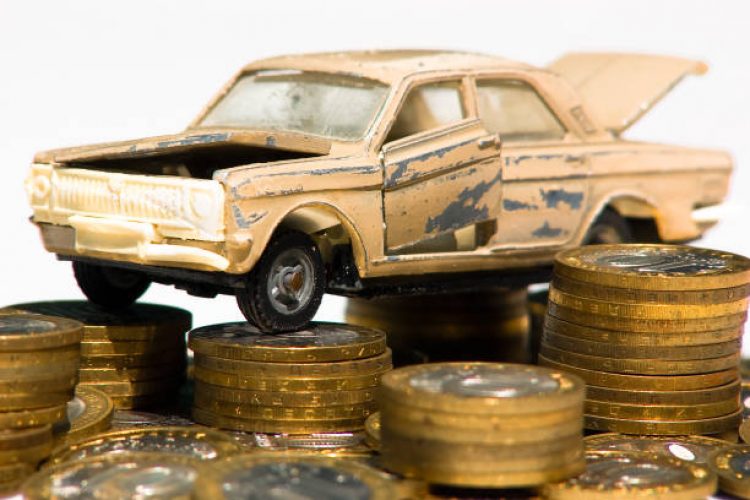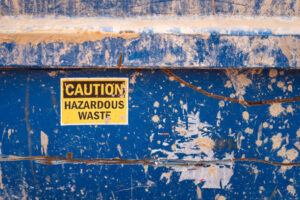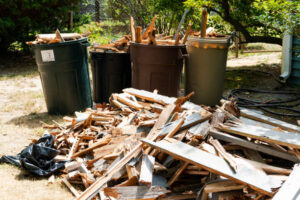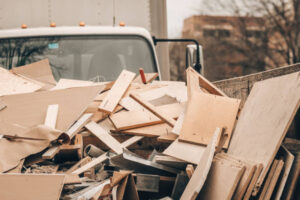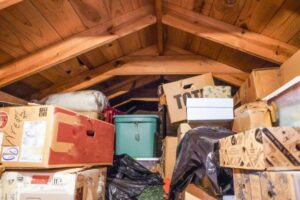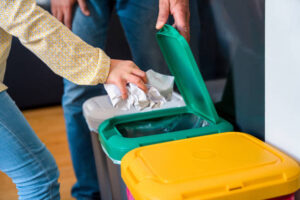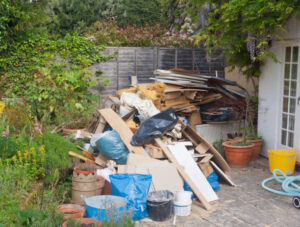Selling scrap metal for cash isn’t just about decluttering your garage—it’s a lucrative opportunity that combines environmental responsibility with financial gain. The global scrap metal recycling market is estimated to be valued at US$ 307.5 billion in 2024 and it is expected to grow at a CAGR of 6.5% to reach US$ 577.2 billion by the end of 2034. Whether you’re a homeowner looking to dispose of old appliances or someone interested in a profitable side hustle, this comprehensive guide will show you how to maximize your returns from scrap metal.
Understanding Scrap Metal: What You Need to Know
Before you start collecting and selling scrap metal, it’s essential to understand the two main categories:
Ferrous Metals
Ferrous metals are primarily composed of iron, are readily attracted to magnets, and include steel, cast iron, and wrought iron—typically fetching a lower price per pound due to their abundance. Common ferrous items include old furniture, appliances, and building materials.
Non-Ferrous Metals
Non-ferrous metals are worth more because recycling them doesn’t result in any change to their chemical properties, so they have an endless life cycle. Although only about 10% of recycled scrap metal is non-ferrous, the higher value means that non-ferrous metals account for 50% of the industry’s revenue.
The most valuable non-ferrous metals include:
- Copper: In 2025, copper is the most valuable, with current price indexes showing copper commanding $3.50-4.50 per pound at most scrapyards, making it worth 30-40 times more than standard steel.
- Aluminum: Found in window frames, gutters, and lawn furniture
- Brass: Common in doorknobs, keys, and plumbing fixtures
- Stainless Steel: Found in appliances and cookware
- Lead: Often found in car batteries (handle with care due to toxicity)
Where to Find Scrap Metal Around Your Home
You don’t need to look far to start your scrap metal collection. Here are common household items that contain valuable metals:
Appliances: Old refrigerators, washers, dryers, microwaves, and water heaters
Electronics: Computer towers, printers, cell phones, and circuit boards
Plumbing Materials: Copper pipes, brass faucets, and old fixtures
Wiring and Cables: Extension cords, electrical wiring, and cable behind entertainment centers
Automotive Parts: Car batteries, radiators, and catalytic converters
Outdoor Items: Aluminum gutters, metal lawn furniture, and old tools
According to scrap metal prices as of September 2025, collecting about 50 pounds of copper tubing could earn you roughly $160.
Essential Tools and Equipment for Scrap Metal Collection
To effectively collect and sort scrap metal, you’ll need:
- Magnet: The most important tool for separating ferrous from non-ferrous metals
- Screwdrivers and Wrenches: For disassembling appliances and removing metal components
- Wire Cutters/Strippers: To remove insulation from copper wire
- Gloves and Safety Gear: Cut-resistant gloves, safety glasses, and sturdy boots
- Sorting Containers: Plastic tubs or cardboard boxes labeled by metal type
- Vehicle: A pickup truck or trailer for transporting heavy loads
- Scale (optional): To estimate weight before visiting the scrap yard
How to Sort and Prepare Your Scrap Metal
Proper preparation can significantly increase your earnings:
Step 1: Separate Ferrous from Non-Ferrous
The easiest way to test if your metal is ferrous is to check it with a magnet—if the magnet sticks, it’s ferrous. Because different metals have different values, it’s important to take the time to separate them diligently, as this will make it easier for the scrap yard to calculate how much your metal is worth.
Step 2: Remove Contaminants
Make sure to remove excess paint, insulation, and other contaminants because different metal grades sell for different prices. Clean metal – metal free from rust – will earn you more cash than “dirty” metal.
Step 3: Strip Copper Wire
Stripping Copper usually makes sense, as if it has iron or other ferrous materials adhered to it, you might get paid a much lower amount because a magnet will stick to it.
Step 4: Organize by Type
Label separate containers for copper, aluminum, brass, steel, and other metals. This organization saves time at the scrap yard and ensures you get the best price for each metal type.
Finding the Best Scrap Yard Near You
Not all scrap yards offer the same prices. Here’s how to find the best deal:
Research Local Options
Search terms like “scrap yard” or “metals recycler” on the web to find a buyer, do your research as different yards have different specialties and buy different materials, and if you know the composition of your material, you can call around to find the best price—buy rates can vary wildly between yards.
Ask the Right Questions
When calling scrap yards, inquire about:
- Current prices for different metal types
- Accepted materials and restrictions
- Payment methods (cash, check, or payment slip)
- Required identification and documentation
- Pickup services for large loads
Use Technology
Use apps like iScrap App to locate nearby scrap yards, compare prices, and check current market rates for various metals.
The Scrap Yard Process: What to Expect
Understanding the process will help ensure a smooth transaction:
1. Registration and Documentation
The federal government has begun requiring all people selling material to register in a database that links a photo and description of the material with the seller’s personal information and thumbprint to catch those who try to steal scrap.
2. Weighing Your Load
Pull your vehicle onto the marked inbound scale, and when the attendant gives you the thumbs-up, that signals he or she has recorded your weight—yards use a large, accurate, pressure-sensitive plate to weigh your vehicle loaded and then unloaded, with the difference in weight being your scrap total.
3. Sorting and Verification
Staff will verify your metal types and may re-sort materials if necessary.
4. Payment
Most states will either give you cash or a payment slip for ferrous metal, but will only issue a check for non-ferrous metal after two business days—a practice implemented to stop the prevalent theft of expensive metals.
Maximizing Your Scrap Metal Profits
Follow these expert tips to increase your earnings:
Timing Matters: Like any commodity, scrap metal prices fluctuate based on supply and demand, so checking current market rates can help you maximize your profit.
Collect in Bulk: You typically earn more money by weight if you bring in larger loads, so you might want to save up your metal and cash in when you have a decent amount.
Build Relationships: Establishing good relationships with scrap yard owners and managers can lead to better rates and insider advice about the best times to sell.
Focus on High-Value Metals: Most casual collectors report earning between $50-200 monthly, depending on their access to higher-value metals like copper and brass compared to more common materials like steel and aluminum.
Stay Informed: Monitor market trends and join online communities like Reddit’s r/ScrapMetal subreddit to exchange tips with fellow recyclers.
Current Market Trends and Outlook
The scrap metal industry continues to evolve with promising growth projections:
According to data from the World Steel Association published in November 2024, around 72% of steel production in the U.S. is from scrap steel, and the industry recycles over 100 million tons of steel annually which helps reduce the carbon footprint drastically.
Recycling can reduce steel emissions by 50% and aluminum’s carbon footprint by up to 25 times. This growing emphasis on sustainability is driving increased demand for recycled metals across industries.
Safety Considerations
Scrapping metal can be physically demanding and potentially dangerous. Always prioritize safety:
- Wear cut-resistant gloves to protect against sharp edges
- Use proper lifting techniques for heavy items
- Wear safety glasses when cutting or stripping metal
- Handle toxic metals like lead with extreme caution
- Follow proper disposal guidelines for appliances with refrigerants
- Stay aware of your surroundings at scrap yards and collection sites
Environmental Impact: Why Scrap Metal Recycling Matters
Beyond the financial benefits, selling scrap metal contributes to environmental sustainability:
Resource Conservation: Recycling reduces the need for mining new resources
Energy Savings: Recycling copper requires up to 85% less energy than mining and refining new copper, significantly reducing environmental impact while preserving a finite resource.
Waste Reduction: Keeps metals out of landfills
Lower Emissions: Significantly reduces carbon footprint compared to virgin metal production
Conclusion
Getting rid of scrap metal for cash is a win-win opportunity that benefits both your wallet and the environment. With the global scrap metal recycling market projected to reach nearly $577 billion by 2034, there’s never been a better time to start. Whether you’re clearing out your garage or launching a side hustle, following the strategies in this guide will help you maximize your profits while contributing to a more sustainable future.
Remember to sort your metals properly, build relationships with local scrap yards, stay informed about market prices, and always prioritize safety. With dedication and knowledge, you can turn your scrap metal into a consistent source of extra income.
References
- Fact.MR – Scrap Metal Recycling Market Share and Statistics
- Okon Recycling – Highest Paying Scrap Metals in 2025
- FinanceBuzz – How to Sell Scrap Metal: A Beginner’s Guide
- Popular Mechanics – How To Sell Your Scrap Metal and Make Some Extra Cash
- Coherent Market Insights – Scrap Metal Recycling Market Size and Forecast

